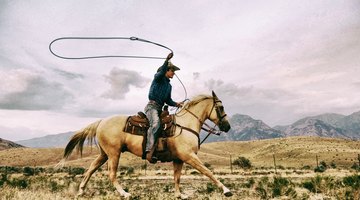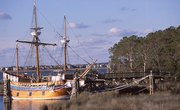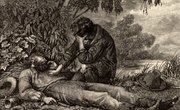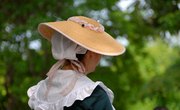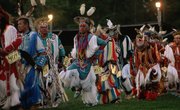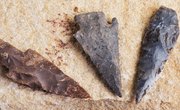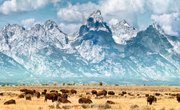Yee-haw! You can already picture them: dusty cowboys, clad in Stetson hats and spurs, rearing on their faithful steed. Perhaps there’s a sunset in the background. Maybe he’s an outlaw gunslinger, on the run from the sheriff for rustling cattle. That image belongs to the perfect, polished cowboy of popular western movie fame. You know him, but do you know any real cowboy history?
All About Cowboy Facts
The unglamorous reality of the life of a cowboy during westward expansion might surprise you. Cowboy history begins as far back as the time of the conquistador’s arrival in America. Since then, cowboys and vaqueros have lived rough lives in hard, western landscapes, subsisting on meager food while doing grueling manual labor. Their lives revolved around horses and cattle, and they barely looked like the glamorized heroes you’ve seen on the big screen.
For many cowboys, a horse was a horse as long as it did its job. Some types of horses cowboys rode included American quarter horses, American saddlebreds, appaloosas, Arabians, Missouri fox trotters, Morgans, mustangs, paint horses, Rocky Mountain horses and a few Tennessee walking horses.
Cowboys preferred horses that were obedient, smart and fast. Mustangs, for instance, have a special place in cowboy lore. They are the wild descendants of the first horses brought to the Americas by the Spanish in the 1500s. Mustangs are notoriously tricky but fleet-footed. Once caught, mustangs can be domesticated. Many cowboys in the Old West relied on loyal mustangs as their ride of choice on cattle drives.
In the days of cowboys and vaqueros in the 1800s, the ranch cook played an important role in the lives of the working men. On long cattle drives, a cook came with them in a chuck wagon, which would carry provisions and equipment to feed the hungry men. After a long day of work, cowboys were hungry and thirsty. The cook had the difficult task of keeping the cowboys well fed on food that would also keep for days at a time.
Cooks would often rely on provisions that could be cured, dried or canned. Ham and beans was a common recipe that kept cowboy bellies full. A skillful cook could also quickly whip up a batch of biscuits from little more than salt, lard and flour. Of course, no cowboy can start a day without his coffee. When it comes to coffee fit for cattlemen, the brew must be strong, dark and bitter. That’s where the phrase “It puts hair on your chest” comes from.
A Brief Cowboy History
The history of cowboys begins in the 1500s after the Spanish set out through the American West. The Spanish brought livestock with them, including cattle and horses, and the Spanish cowboys, called vaqueros (from the Spanish word vaca, meaning cow), helped tend their livestock on ranches by using cowboy skills that we still recognize today, like roping and herding.
For the next two centuries, the Spanish ranches spread up from Mexico into the land that is now the United States, including places that are now in California, Arizona, New Mexico and Texas. The ranching style of the vaqueros also spread south into South America. Today, countries like Argentina and Brazil continue to have thriving cowboy cultures much like the U.S. The world championship for bull riding often goes to a Brazilian cowboy. Surprisingly, Canada also has a lively cowboy culture. The Calgary Stampede, the legendary rodeo, is held every year in Alberta, Canada.
Why Did Cowboys Move West?
Contrary to popular belief, cowboys didn't move west with the rest of the settlers. Cowboy culture was already in the West when American settlers arrived. Nonetheless, this influx of new U.S. settlers marked a cultural shift for the cowboy way of life, with the newcomers adopting vaquero techniques and clothing better suited for the rough landscape of the West and incorporating these elements into their own culture.
This migration of new settlers, with cowboys and vaqueros in the 1800s on the forefront, was called manifest destiny. Manifest destiny was a belief held by many Americans in the 19th century. It was comprised of three basic ideals: 1) The American people had been blessed by virtue and so it was their duty to conquer and expand, a sort of 19th-century "noblesse oblige"; 2) A major part of America’s destiny as a nation was to take the West for farmland, remaking it to become the breadbasket of the growing nation; and 3) This duty of expansion was inevitable and irresistible. They thought it would happen whether every citizen wanted it or not.
The life of a cowboy during westward expansion changed drastically because of manifest destiny. Once solitary, with days lived more among livestock than with people, cowboys saw expanding railroad lines bring civilization to them. Although many parts of the West remained unsettled, new towns cropped up along the railroad lines.
The railroads also changed the way the cowboys did their jobs. At one time, cowboys had to drive herds of cattle across expanses that now make up entire states. With the introduction of functioning railroad lines in the West, cowboys only had to herd livestock to rail yards. From there, the cattle could be transported across the country to be sold.
Their social lives also became less isolated. With the encroachment of towns in the great expanse of the plains, it was more possible for cowboys to maintain families with wives and children. Although many undoubtedly had homesteaded in the eras before, towns brought social structure and commerce – places close by to buy dry goods and food that could not be found in the outdoors – and so, in some ways, westward expansion eased the rough lives of cowboys.
What Was the Life of a Cowboy During Westward Expansion?
The life of a cowboy during westward expansion involved skilled riding, lassoing and lots of teamwork. Cowboys and vaqueros in the 1800s drove cattle in groups. The men (and sometimes women) driving the cattle were called drovers, and the act of relocating the cattle was called a drive.
Before a cattle drive, the cattle had to be branded. The purpose of branding was to prevent drovers from mistaking one owner’s cattle for another’s. It also helped with counting and sorting the cattle.
Many days, work lasted from sunup to sundown, as much as 15 hours without much rest. Sometimes cowboys had to defend their herds from cattle rustlers trying to steal from the herd or other people, like Indian tribes, who didn’t want the cattle drivers crossing their land. In these instances cowboys might have used guns, but despite their reputation in movies, cowboys would try to avoid violence unless it was necessary. They were more apt to use lassos on a daily basis than six-shooters.
To protect themselves from their coarse work, cowboys wore specialized clothing that is iconic today. They wore broad-brimmed hats to shield their eyes from the sun. A well-placed bandana could keep prairie dust out of a weary cowboy’s mouth and nose. Chaps, leg coverings made of leather, protected a cowboy’s legs from rubbing on the saddle or against harsh desert plants like the cactus.
Modern-Day Cowboys
Many modern-day cowboys still perform the same tasks as the old vaqueros of history. The main difference is that there is almost no need for cowboys to go on long cattle drives. With fences and land ownership, cattle drives are impossible in many places.
Modern cowboys dress much the same as their historical counterparts. The iconic Stetson cowboy hat is a usual sight in the West and even in places you might not expect, like Florida or Brazil. Cowboys still wear chaps, bandanas and jeans. However, technology has come into play in their lives in a big way.
Ranches can now raise livestock by the thousands. Computers and other technology help cowboys keep track of their cattle, measure weight and feed and so on. Sometimes modern cowboys use trucks or four-wheelers for farm tasks, but the mystique of the cowboy life has not been lost. Many people in the West still ride horses and teach their children to ride as a family tradition.
The glamour of the Wild West also lives on in modern rodeos and horse shows. Many rodeos travel, and you might be surprised to see a rodeo show pop up in your own town. If you decide to check it out, you could watch competitors try their hand at staying on a furious bull for eight seconds. Grown-up competitors ride bucking broncos, but little kids join the fun by mutton busting, the silly name for riding sheep.
Movies About Cowboys
If your child wants to learn more about cowboys, consider reading cowboy books with them or watching movies. Not all cowboy movies are the best fodder for kids. Unsurprisingly, some of the best are violent and coarse. However, if you want to watch movies about cowboys with your kids, you still have options.
"Back to the Future III" mixes time travel with classic westerns. Starring Michael J. Fox, it’s a great movie to use to introduce some fun stuff about the Wild West without anything getting too scary.
"Rango" is an animated movie about a cowboy chameleon who finds himself in a mess of trouble in a Wild West populated by animals. He learns to be brave and discovers himself, but there are a lot of hijinks along the way.
"Butch Cassidy and the Sundance Kid" (1969) sports a cast of likable outlaw heroes. Based on a true story, this movie portrays the historical outlaws and their legendary heists.
If real movies about real outlaws is a little too much for your kid, you can always go back to the most iconic cowboy character: Woody from "Toy Story." Even though he’s not a realistic cowboy, he still has the hat and boots. He also has the territorial mentality of a cowboy sheriff in an Old West town. So, "Toy Story" is as good a place as any to let your kids start learning about cowboys.
How to Be a Cowboy Kid
If your kids want to be a cowboy, first they have to learn the history. Once they know what life was like for real cowboys, you can help them play cowboy with various hands-on activities. Dressing like a cowboy is easy, but what about cooking like one? Have a chuck wagon day in the kitchen, making biscuits, beans and hot cocoa. Set up your cattle drive outside, and eat your vittles before sleeping under the stars.
If your little cowboy still isn’t satisfied, it might be time to plan a trip to a rodeo or a dude ranch. There, your little one can meet real-life cowboys and ask them questions about what it’s like to rope and ride.
Related Articles
References
Writer Bio
Rebecca Renner is a teacher and college professor from Florida. She loves teaching about literature, and she writes about books for Book Riot, Real Simple, Electric Literature and more.

